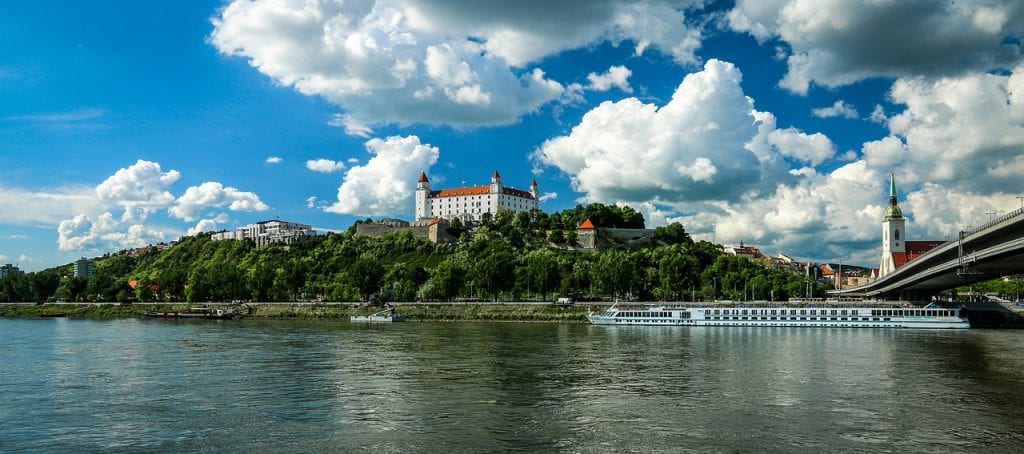
The castle dominates the city of Bratislava – to which the first written reference is related in the annals of Salzburg of 907, in association with a battle between Bavarians and Hungarians. The castle’s hill was populated as early as the late Stone Age, while the first known inhabitants were the Celts who had founded a fortified settlement here – ‚Oppidum‘. For four centuries, the border of the Roman Empire ‚Limes Romanus‘ ran through the area. During the Greater Morovian Empire, Slavs built a fortress that became a significant centre for the time. In the 10th century, Bratislava became an integral part of the growing Hungarian state, with a palace of stone and the church of St. Salvator and its chapter being built on the castle hill in the 11th century. In the 15th century, in the reign of Sigismund of Luxembourg, the castle was built in Gothic style as an anti-Hussite fortress. During this time, a new entrance to the castle was built on the eastern side – Sigismund gate, while 7-metre thick fortification walls were built on the western side and a castle well was constructed in 1437. Its depth is 85 m while the water table has a depth of 42 m. In the 16th century, King Ferdinand ordered the rebuilding of the castle in Renaissance style, while in the 17th century, when the castle became the seat of hereditary province chief Pálffy, it was rebuilt in a baroque style. In the reign of Maria-Theresa, the castle was arranged for the needs of her son-in-law – governor Albert of Saxony and Tessen, who was a fervent collector of arts and who installed his works at the castle. This collection was later moved to Vienna to become today’s Albertina gallery. In the reign of Joseph II, the castle housed a general seminary to educate priests. Later, it served as barracks for soldiers until it burnt down in 1811. The present reconstruction was carried out as late as 1953 – 1968. Today the castle serves as a representative for the Slovak National council and houses the collections of the Slovak National Museum, exhibitions of Jewels from the ancient past, as well as the Museum of History.